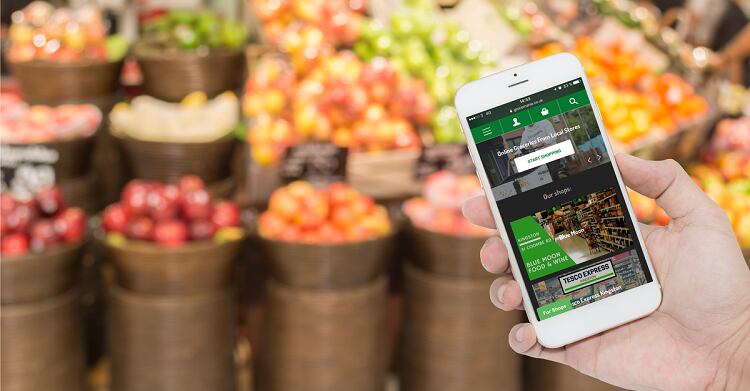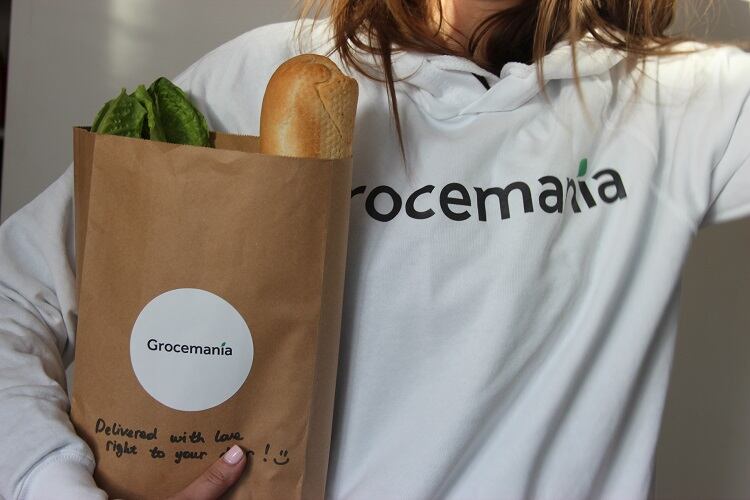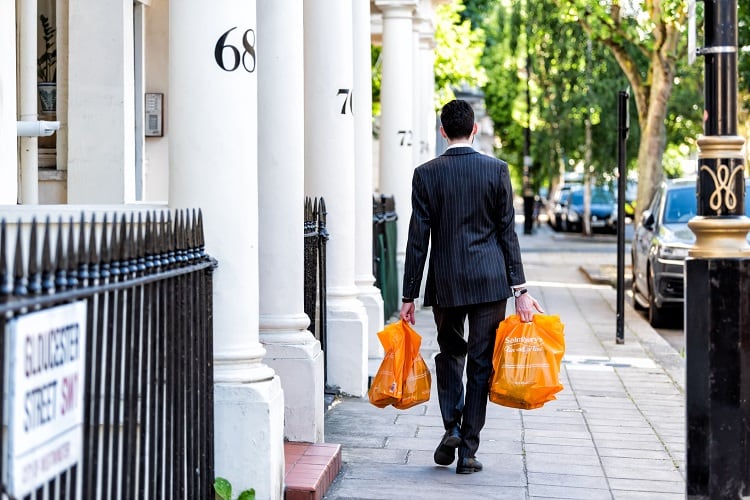Grocemania first launched in June 2017 after founder and CEO Askar Bulegenov became frustrated with current delivery models, including Deliveroo, UberEats, and supermarket-run logistics services. Such companies are either unwilling to deliver grocery orders or demand an extravagant minimum spend, he told FoodNavigator.
Bulegenov’s concept is both consumer and business-friendly, he explained. Customers visit the Grocemania website, enter their postcode, and select a local Grocemania retail partner within a three-mile radius. Once the customer has placed an order, Grocemania’s software notifies the store in question as well as a local courier driver. The product can be delivered to the consumer within as little as one hour.
“It is the same concept as Deliveroo, but for grocery stores,” the CEO told this publication. How the two companies monetise their services, however, is very different.
Monetising a ‘business-friendly’ service
Grocemania is marketing itself as a more cost-efficient solution for businesses in the grocery delivery space. The start-up does not charge its partner stores commission, nor a joining fee.
Rather, the consumer pays a £2.50 delivery fee on top of a grocery order of £10 or more. On orders above £30 delivery is free, and baskets below £10 incur a charge of £4.50.
Grocemania also monetises by marking up each product ‘for convenience’, Bulegenov explained. “For example, if a can of coke costs £1 in-store, on our platform it will cost between £1.20 and £1.30.”
With a minimum order of £10, Grocemania generates £5.50 in added revenue – £5 of which will go to pay the bicycle or moped courier for the three-mile delivery. The start-up is then left with 50p profit for a minimum order.
“What is interesting is that minimum orders tend to happen with short time customers only. Currently, our customer retention level is about 60%, which means that two out of three people who try Grocemania, stay with us,” said Bulegenov.
Average spend is also on the rise. “The average order is now at £24.70, and with that order, we receive additional revenue of £8 – again, £5 of which goes to delivery.”
This model makes Grocemania an attracting service for store owners, the CEO suggested. “Online has grown extremely fast. In the past three years, it has tripled. For businesses, [online] is the future. They have to embrace it and adopt it.”
Yet developing an in-house delivery service, including hiring drivers, setting up a website, and promoting the offering, can prove expensive and complicated. “But it is absolutely free with us,” Bulegenov continued.
The consumer perspective
From the consumer’s standpoint, Grocemania can also prove cost-effective. Some of the main supermarket retailers demand customers commit to a minimum £60 spend for a one-hour delivery, the CEO told this publication. “With us, it’s only £10. We can see that consumers are willing to pay extra for the convenience of one-hour delivery, and they don’t need to reach a huge minimum basket.”
Grocemania’s customer base is largely made up of three demographics. Sixty percent of all orders come from local parents charged with caring for a family in the home. The rest is made up of ‘time seeking’ male professionals aged 35-42 and local students.
These customers are predominantly seeking an ‘occasional service’ but without wanting to ‘spend extra’ with alternative providers. In the food and beverage category, the most ordered product, surprisingly, is large 1.5L bottles of water, followed by baby food. Alcoholic drinks come in third place.

Challenges and opportunities
Grocemania has partnered with 53 stores – including Nisa independent grocers and Londis convenience stores – and predicts 20 more are on the way. “We are actively trying to sign new stores,” revealed the CEO. The start-up is also testing the concept in two Tesco Express branches.
The start-up has rolled out in Central London, but is covering just one-quarter of the area – equating to 26 postcodes out of a possible 103. “We are trying to expand as much as we can…and are now trying to cover zone two and three.”
Beyond expansion, the start-up’s main challenge is to educate consumers about its services: “People are only aware about big options like Tesco, Sainsbury’s, Amazon, and Ocado.” And the second challenge will be bigger players like Delivery and UberEats, which Bulegenov said could ‘pivot’ and ‘simply eat us’.
Grocemania recently launched an IOS app and is set to introduce an Android version. The start-up will launch its second seeding round in the coming weeks.




